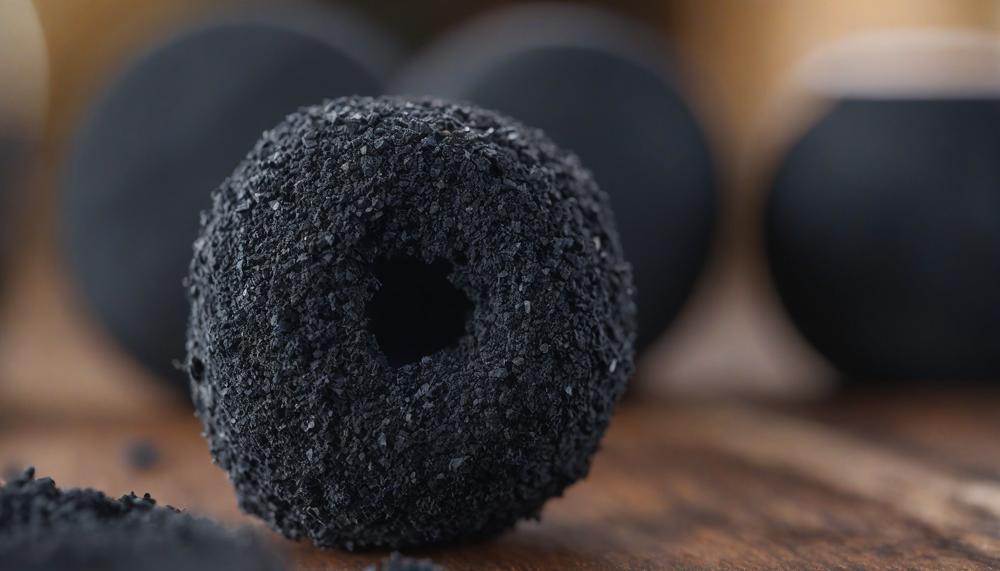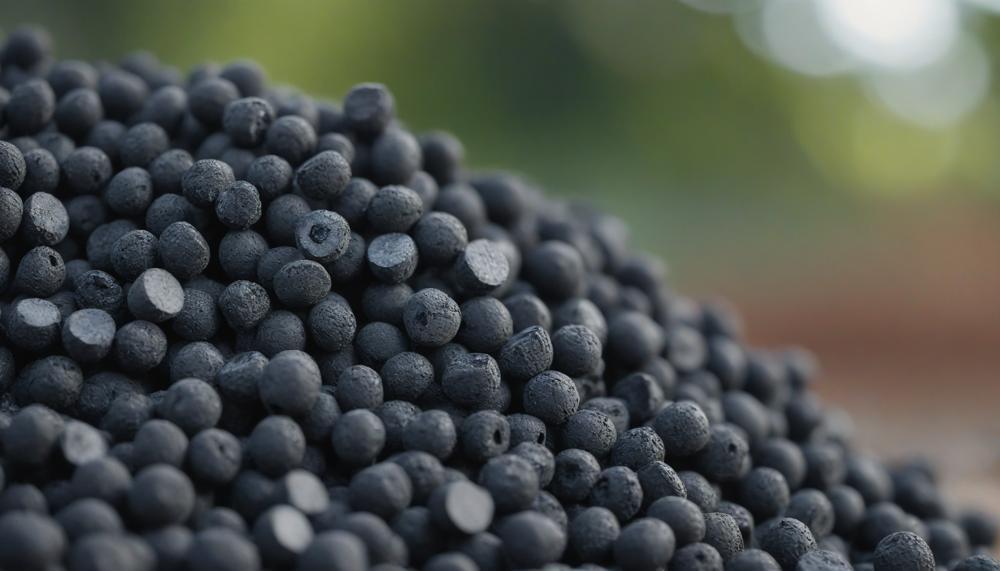Yes, you can indeed use charcoal more than once. This is not only cost-effective but also environmentally friendly. By reusing unburned charcoal, you minimize waste and make the most out of a valuable resource. Here are some key insights to consider if you’re looking to get the most out of your charcoal:
- Economical Benefits: Reusing charcoal can save money over time, reducing the need to purchase new bags frequently.
- Environmental Impact: By maximizing the use of each batch of charcoal, you contribute to waste reduction and sustainable practices.
- Quality and Performance: While reused charcoal won’t last as long as fresh pieces, it can still provide enough heat for shorter cooking sessions. It’s ideal for quick grilling tasks or as a supplement to fresh charcoal.
- Versatility: Beyond grilling, used charcoal has various applications around the home from deodorizing spaces to enriching garden soil.
Whether you’re a casual griller or a barbecue enthusiast, understanding how to reuse your charcoal can enhance your grilling experience while promoting sustainability. Read on to learn how to properly store and maximize the use of your charcoal, as well as discover alternative uses that can benefit your household and garden.
Contents
Can You Reuse Charcoal?
| Can You Reuse Charcoal? | Yes, you can reuse charcoal effectively for grilling and beyond. | |
| Explanation: | Reusing charcoal is a practical approach that saves money, minimizes waste, and benefits the environment. After grilling, extinguish the coals by closing grill vents to snuff out oxygen. Once cooled, sift through to separate unburned charcoal from ash for future use. | |
| Insights: |
|
|
| Alternative Uses: |
|
|
Will the Old Reused Coals Burn?
Yes, old reused coals will indeed burn. The effectiveness of burning old charcoal depends on two crucial factors: the physical condition of the charcoal and how well it was stored. As long as the charcoal pieces remain whole and have been kept dry, they are primed to burn once more.
Even if these coals encounter a bit of moisture, they prove to be relatively resilient and can still be fired up, making them both practical and cost-effective for repeat usage.
Here’s a breakdown of the key considerations for reusing old charcoal:
| Condition | Storage | Usability |
| Charcoal must be intact, not crumbled | Must be kept in a dry environment | Can be used multiple times if these conditions are met |
| Sensitivity to moisture | Avoid damp locations | Still usable with slight exposure to moisture |
Charcoal’s capacity to be reused aligns with eco-friendly practices by minimizing waste, thus not only supporting your grilling endeavors but also contributing positively to environmental conservation. When you choose to ignite these sturdy bits of charcoal, you ensure that every last ember serves its purpose, extending the life cycle of the resources you’ve utilized.
Can you Reuse Charcoal for Grilling?
Yes, you can reuse charcoal for grilling. It’s a practical way to save money and reduce waste from unused portions. After grilling, ensure to remove ash and store the charcoal in a cool, dry place for future use. When relighting, mixing reused charcoal with fresh pieces helps maintain consistent heat and burn.
Reused charcoal tends to ignite faster but may burn quicker with lower heat output compared to fresh charcoal. Opting for natural charcoal without added chemicals is preferable for health reasons when reusing.
For longer grilling sessions or higher temperatures, supplement with fresh charcoal as needed. Flavored charcoals may diminish in potency with reuse, affecting the intensity of smoky flavors in your food. Adding fresh charcoal periodically can extend the life of reused charcoal before it fully burns out.
| Pros | Cons | Considerations |
| Saves money | Lower heat output over time | Remove ash before reuse |
| Reduces waste | Shorter burn time | Store in a dry place |
| Easy to handle | May require more frequent replenishment | Mix with fresh charcoal |
Can you Reuse Charcoal Briquettes?
Yes, you can reuse charcoal briquettes. To ensure successful reuse, the used charcoal should be at least half its original size and completely dry. Reusing charcoal is not only economical but also environmentally friendly, as it reduces waste and conserves resources. Here are the steps and tips for reusing charcoal briquettes effectively:
- Extinguish Properly: After grilling, close the grill vents to suffocate the coals and allow them to cool down completely.
- Remove Ash: Carefully shake off or brush away excess ash from the briquettes to expose the remaining fuel.
- Storage: Store the used briquettes in a dry place, away from moisture. A sealed metal container works best to keep them dry and ready for the next use.
- Mix with Fresh Charcoal: For best results, mix the reused briquettes with fresh ones. This ensures consistent heat and performance during your next grilling session.
Can you Reuse Lump Charcoal?
Yes, you can definitely reuse lump charcoal. This practice is not only economical but also environmentally friendly, allowing you to extend the life of the charcoal and reduce waste.
How to Reuse Lump Charcoal
To ensure the effective reuse of lump charcoal, follow these steps:
- Extinguish Properly: After grilling, smother the flames by shutting the grill’s vents and lid to cut off oxygen. This preserves the remaining charcoal.
- Store Correctly: Once the charcoal has completely cooled, sift through it to separate unburned pieces. Store these dry pieces in a moisture-free environment.
- Reignite: When ready to grill again, mix the saved charcoal pieces with fresh charcoal to maintain efficient burning.

Why Reuse Lump Charcoal?
Reusing lump charcoal offers several benefits:
| Economic Savings | Reduces the need for new charcoal, saving money. |
| Environmental Impact | Decreases waste and resource consumption. |
| Efficiency | Although slightly less efficient, properly stored used charcoal can still provide a satisfactory grilling experience. |
Considerations When Reusing Lump Charcoal
While reusing lump charcoal is beneficial, be aware of a few considerations:
- Efficiency Decline: Like a used car, previously used charcoal may not perform as well as fresh charcoal.
- Preparation Is Key: Ensure the charcoal is dry and free from excessive ash to maximize performance.
Alternative Uses for Used Lump Charcoal
If the charcoal is too small to be effectively reused for grilling, consider these alternative uses:
- Soil Enhancement: Charcoal ash can enrich garden soil.
- Moisture Control: Helps prevent rust and moisture in tools and other metal objects.
- Odor Absorber: Effective in reducing odors in various household contexts.
What are the Benefits of Reusing Charcoal?
| Benefits of Reusing Charcoal | Details |
|---|---|
| Environmental Impact | Reusing charcoal reduces the need for new production, lowering greenhouse gas emissions and conserving natural resources. |
| Cost Efficiency | By extending the life of charcoal, you save money on frequent purchases, making grilling more economical. |
| Sustainable Practice | Supports sustainable grilling habits by minimising waste and maximising the utility of natural resources. |
How Many Times Can one Reuse Charcoal?
The number of times you can reuse charcoal depends on how well you care for it after each grilling session. Generally, you can reuse charcoal multiple times, typically between 2 to 3 times for best results. Here’s a breakdown of what you need to know:
| Factors | Details | Recommendation |
| Quality of Charcoal | High-quality hardwood charcoal can be reused more effectively than cheaper alternatives. | Invest in good quality charcoal for optimal reuse. |
| Burning and Snuffing | After grilling, allow charcoal to burn out completely. Then, snuff out remaining coals and allow them to cool. | Properly snuff out coals to preserve them for reuse. |
| Ash Removal | Sift out ash and debris before storing charcoal. | Remove ash to maintain charcoal quality. |
| Storage Conditions | Store charcoal in a dry place to prevent it from absorbing moisture. | Keep charcoal dry for easier relighting. |
Reusing charcoal is not only economical but also reduces waste and benefits the environment.
Conclusion
Embracing the art of reusing charcoal not only showcases a savvy grilling strategy but also fortifies a commitment to sustainability. By recycling unspent charcoal, you are not just pinching pennies; you are stepping into a role that reduces environmental impact and supports resource conservation. Whether it’s firing up for a quick barbecue or enriching your garden soil, the adaptability of used charcoal is vast.
The process involves simple steps: extinguishing the coals properly, sifting out the ash, and storing the remnants in a dry place. When the time comes, mixing these older, yet still vigorous, coals with fresh ones ensures a robust fire, ready to perfect your next culinary adventure.
Moreover, the notion that what once kindled your barbecue can now breathe life into your garden or freshen up your home is a testament to the versatility of charcoal. As we harness these practical uses, we ignite a deeper appreciation for the cyclic nature of resources, reinforcing an ethos of efficiency and mindfulness.






